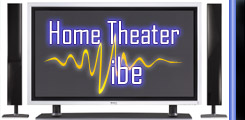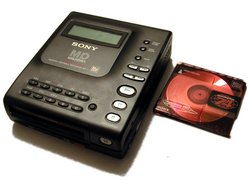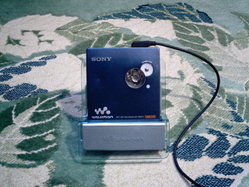MiniDisc Players
A MiniDisc (MD) is a disc-based data storage device for storing any kind of data, usually audio. The technology was announced by Sony in 1991 and introduced January 12, 1992. more...
Along with Philips and Matsushita' Digital Compact Cassette (DCC) system, MiniDisc was targeted as a replacement for analogue cassette tapes as the recording system for Hi-Fi equipment. What became a very brief format war ended when DCC was phased out in 1996.
MD Data, a version for storing computer data was announced by Sony in 1993, but it never gained significant ground, so today MDs are used primarily for audio storage.
Although MiniDisc has had some success, it has not caught on in the US and Europe as well as Sony had hoped, though in Japan it is extremely popular. The low initial uptake of the format was attributed to the small number of pre-recorded albums available on MD (most of which were produced by Sony's own record labels and later were phased out completely) and high cost of equipment. The company avoided the mistake that it had made in the 1970s with the Betamax video recording system, and this time licensed the MD technology to other manufacturers, with JVC, Sharp, Pioneer, Panasonic and others all producing their own MD systems. In recent years MiniDisc has faced new competition from CD-Recordable, solid-state memory recording (flash memory), and hard disk recording, while the popularity of traditional cassette tape refuses to wane in certain quarters. MiniDisc is widely respected as being a very reliable format when it comes to portable audio storage, such as field recording.
Design
Physical characteristics
The disc is permanently housed in a cartridge (68 × 72 × 5 mm) with a sliding door, similar to the casing of 9 cm (3.5 inch) floppy diskettes. The audio discs can either be recordable (blank) or premastered. Recordable MiniDiscs use a magneto-optical system to record data. A laser heats one side of the disc to its Curie point, making the material in the disc susceptible to a magnetic field. A magnetic head on the other side of the disc alters the polarity of the heated area, recording the digital data onto the disk. Playback is accomplished with the laser alone: taking advantage of the Faraday effect, the player senses the polarisation of the reflected light and thus interprets a 1 or a 0. Recordable MDs can be recorded on repeatedly; Sony claims up to one million times. As of May 2005, there are 74-minute and 80-minute discs available. 60-minute blanks, which were popular in the early years of the format, were phased-out long ago and are rarely seen. Premastered MiniDiscs use a mastering process and optical playback system that is very similar to CDs, making them physically dissimilar to recordable discs. The recorded signal of the premastered pits and of the recordable MD are very similar to that of the CD. Eight-to-Fourteen Modulation (EFM) and a modification of CD's CIRC code, called Advanced Cross Interleaved Reed-Solomon Code (ACIRC) are employed.
Read more at Wikipedia.org



